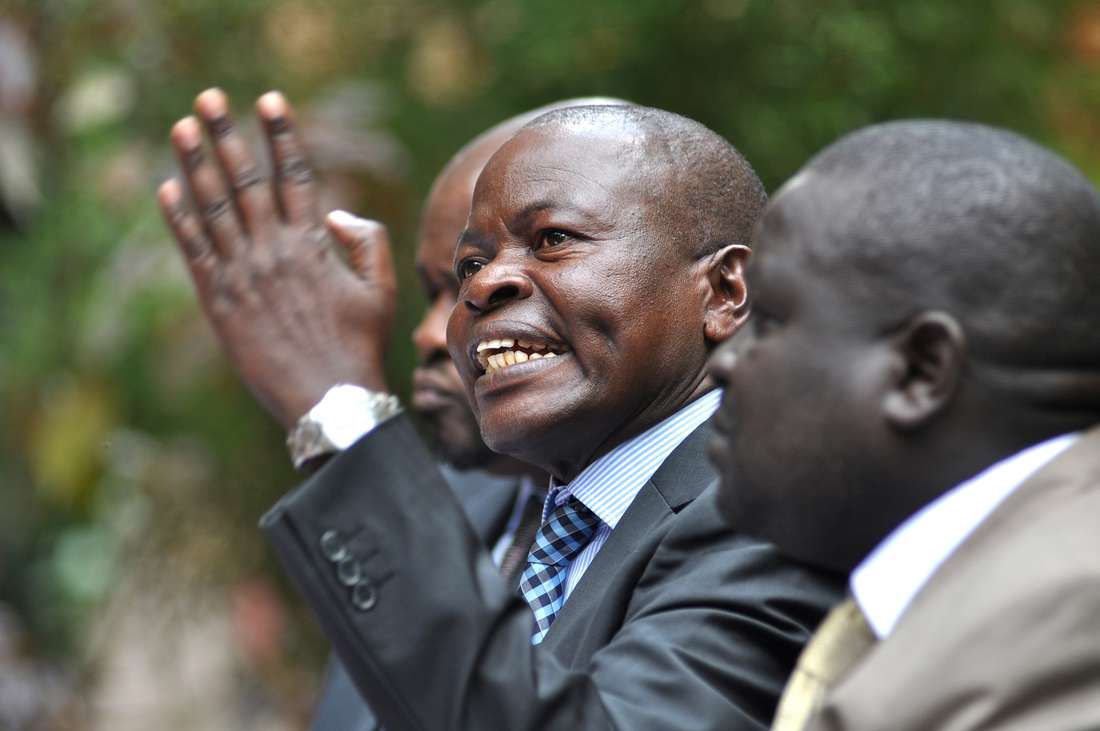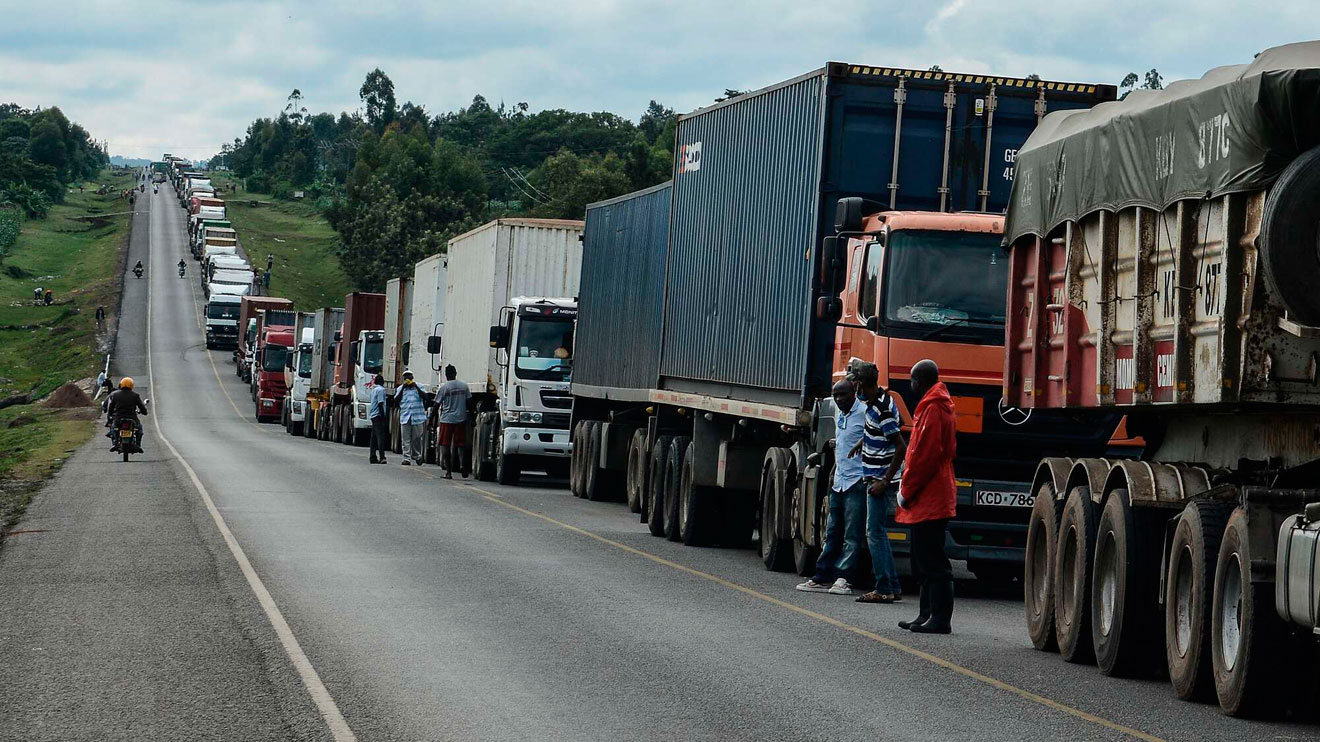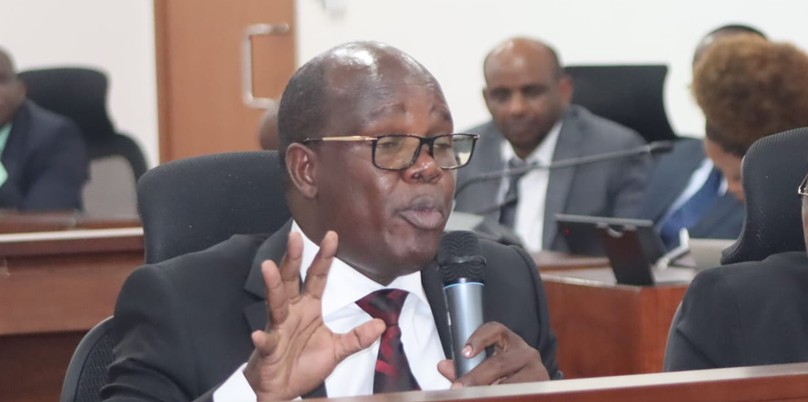Kenya unveils road safety plan to halve deaths, serious injuries by 2028
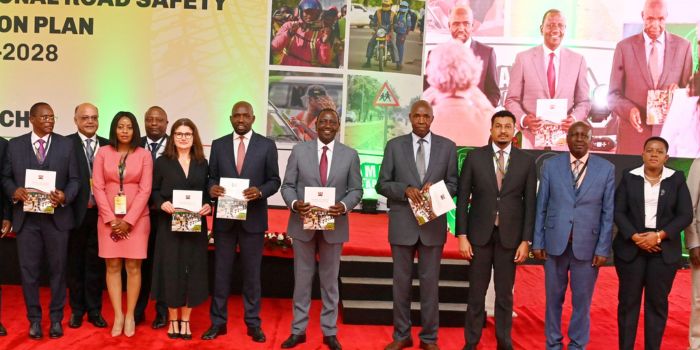
President William Ruto says a sharp focus would be on designated high-risk corridors and urban areas.
The government has rolled out the National Road Safety Action Plan 2024–2028, which aims to halve the high numbers of deaths and serious injuries recorded so far.
President William Ruto launched the five-year action plan on Wednesday, saying a sharp focus would be on designated high-risk corridors and urban areas. The plan details the coordination of delivery partnerships, funding, risk targeting, and infrastructure safety.
More To Read
- Seven killed in Nairobi-Mombasa highway crash involving matatu and truck
- How Trump–Ruto health deal fills the void left after USAID exit
- UNAIDS hails Kenya–US health framework as major boost for HIV response
- Kenya, US sign Sh208 billion health cooperation deal to transform to strengthen primary care, services
- Ruto backs IMF partnership as key to Kenya’s debt, economic reforms
- Tough decisions stabilised the economy, saved Kenya from shame – Ruto
To tackle unsafe behaviour, the National Transport and Safety Authority (NTSA) will adopt a multifaceted approach, combining general deterrence measures with targeted promotion campaigns to stop speeding and promote responsible road use.
Efforts will also be made to enhance the proper use of quality helmets by motorcycle riders and the people they carry, reduce alcohol consumption by road users, and establish safer norms around pedestrian crossings.
"Improved compliance and enforcement, along with enhanced driver training and licensing, are pivotal aspects of our strategy," the plan says.
Additionally, the plan establishes the Nationwide Emergency Response System to bolster post-crash services, including injury diagnosis and stabilisation, swift transportation to medical facilities, effective emergency and trauma care, and long-term rehabilitation.
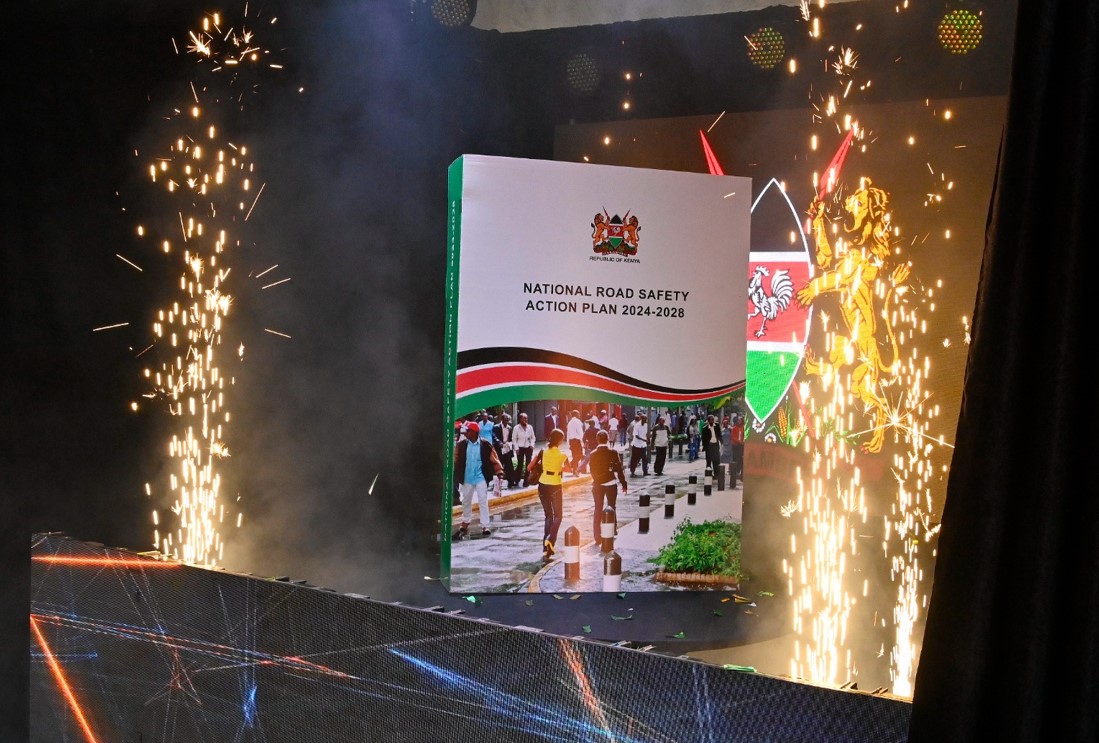 The National Road Safety Action Plan 2024–2028 that President William Ruto launched at the Kenyatta International Convention Centre (KICC) in Nairobi on April 17, 2024. (Photo: PCS)
The National Road Safety Action Plan 2024–2028 that President William Ruto launched at the Kenyatta International Convention Centre (KICC) in Nairobi on April 17, 2024. (Photo: PCS)
Poor funding
However, the effective implementation of these initiatives hinges on adequate funding, which has been a major challenge.
The NTSA's plan highlights the need for sustainable financing to significantly enhance Kenya's road safety, citing annual socioeconomic losses exceeding Sh450 billion attributed to road crashes.
"Insufficient funding poses a significant obstacle to our efforts to reduce road fatalities and serious injuries," it says, adding that the poor funding of road safety initiatives is to blame for increased fatalities.
The authority notes that several national and county government agencies—the NTSA, the Kenya National Highways Authority, police and county health departments—are funded to deliver safety-related services. It says, however, that the funding is insufficient.
"The annual socioeconomic losses in Kenya, as a result of road crashes, are estimated to be more than Sh450 billion. There is a need to sustainably finance road safety programmes and cost-effective safety investments over the next decade," reads the plan.
 President William Ruto, Transport minister Kipchumba Murkomen and other officials listen to a presentation during the launch of the National Road Safety Action Plan 2024–2028 at the Kenyatta International Convention Centre (KICC) in Nairobi on April 17, 2024. (Photo: PCS)
President William Ruto, Transport minister Kipchumba Murkomen and other officials listen to a presentation during the launch of the National Road Safety Action Plan 2024–2028 at the Kenyatta International Convention Centre (KICC) in Nairobi on April 17, 2024. (Photo: PCS)
The NTSA further says many crashes occur on the northern corridor, which also accounts for a large percentage of fatalities.
The plan states that five roads in Nairobi County, representing 2 per cent of the network, account for 36 per cent of all fatal crashes in the country.
The safety agency adds that fatal crashes are highly concentrated in time.
Twenty-six per cent of crashes in Nairobi (30 per cent of crashes in the whole country) occur between 7 pm and 10 pm. These hours come after the main rush hour period, when congestion tends to decrease, allowing higher speeds.
During these later hours, lack of visibility and alcohol consumption also come into play.
The authority emphasised the importance of factoring in user behaviour when developing effective policies.
Based on video data collected at 38 blackspots in Nairobi, only 24 per cent of pedestrians use designated crosswalks when available.
"Helmets play a crucial role in reducing fatalities and injuries but their effectiveness depends on proper usage and quality," the NTSA stresses.
We will improve our infrastructure, adopt zero-tolerance to negligence and aggressively enhance awareness to reduce road accidents.
— William Samoei Ruto, PhD (@WilliamsRuto) April 17, 2024
The Government will also employ modern traffic monitoring technology to ensure safety of road users across the country.
Launched the National Road… pic.twitter.com/vWOijXHGfS
Accident statistics
The NTSA's data further shows that road accidents have been on an upward trajectory since 2008.
According to the data, slightly more than 3,000 people perished on Kenyan roads in 2008 compared to 4,000 in 2009. In 2010, slightly more than 3,000 people died and since 2010, the number of road fatalities has remained at 3,000.
In 2019, the fatalities numbered slightly more than 3,500, while in 2020 there were 4,000 and in 2021 they numbered 4,500. The fatalities fell slightly below 5,000 in 2022.
Road crashes across the country have claimed at least 1,189 lives since the beginning of the year, according to the latest data from the NTSA, an increase compared to the same period in 2023. These deaths occurred between January 1 and April 1, 2024.
 President William Ruto and Transport minister Kipchumba Murkomen are pictured at the Kenyatta International Convention Centre (KICC) in Nairobi on April 17, 2024, ahead of the launch of the National Road Safety Action Plan 2024–2028. (Photo: PCS)
President William Ruto and Transport minister Kipchumba Murkomen are pictured at the Kenyatta International Convention Centre (KICC) in Nairobi on April 17, 2024, ahead of the launch of the National Road Safety Action Plan 2024–2028. (Photo: PCS)
Since the year started, some 7,198 Kenyans have been involved in road accidents, marking an increase of 1,908 from last year, while 3,316 were seriously injured and 2,693 suffered minor wounds.
In 2023, the number of deaths from crashes stood at 1,129, with 2,435 people seriously injured and 1,726 suffering slight injuries.
Pedestrian fatalities this year totalled 436, a rise from the 374 recorded last year, while motorcyclists followed with 276 deaths, a slight decrease compared to 311 in 2023.
In 2024, at least 255 passengers died in road crashes, compared to 211 in 2023. Ninety-eight drivers died, a decrease compared to 108 in the same period last year.
The number of pillion passengers who have died so far is 102, compared to 105 last year.
This year, 22 pedal cyclists have died from accidents within the period under review, compared to 20 in 2023.
Top Stories Today


